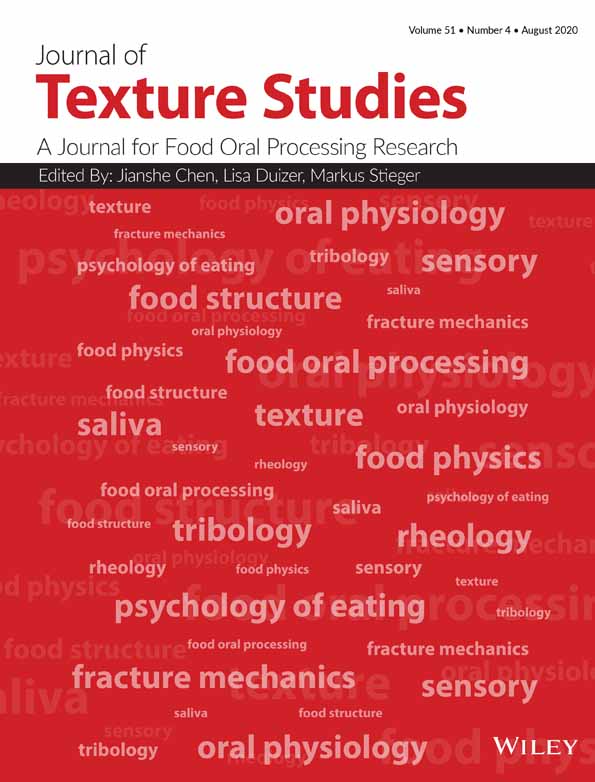Rheological study of tannin and protein interactions based on model systems
Funding information: Fondo de Fomento al Desarrollo Científico y Tecnológico, Grant/Award Number: 21110184; Vicerrectoría de Investigación, Pontificia Universidad Católica de Chile, Grant/Award Number: ETR17-019
Abstract
The interaction between wine tannins and saliva proteins is responsible for wine astringency perception, producing a depletion of salivary proteins and changes on oral friction. In sensorial terms, astringency is described as a dryness and puckering sensation in the mouth, which is related to the “structure” or “body” of red wines. However, these last descriptors, as structure or body, are perceived during wine tasting and commonly related to wine viscosity. To address these differences on sensory response, we hypothesize that tannin–protein interactions could be a key factor involved in the viscosity of red wines/saliva mixtures, just as they are for astringency. We used a rheological method to study the impact of tannin–protein interaction on the viscosity of model wine-saliva systems. Mixtures of model saliva based on mucin and typical astringent compounds, as commercial tannins and gallic acid, were evaluated for their rheological behavior. The viscometric flow of the fluid mixtures was determined, and subsequently, the viscosity was evaluated at a shear rate of 60 s−1. It was observed that red wines/saliva mixtures exhibit non-Newtonian flow and ascending tannin doses led to an increase in the apparent viscosity. Nephelometric analysis demonstrate that tannin-mucin aggregates were formed, which suggests that these complexes were potentially responsible for the viscosity increases, modifying the rheological behavior of these mixtures. Results from this work propose that tannin–protein interactions are also involved in the underlying mechanism of thickness perception of red wines and rheology could be a complementary instrumental technique for wine mouthfeel characterization.




